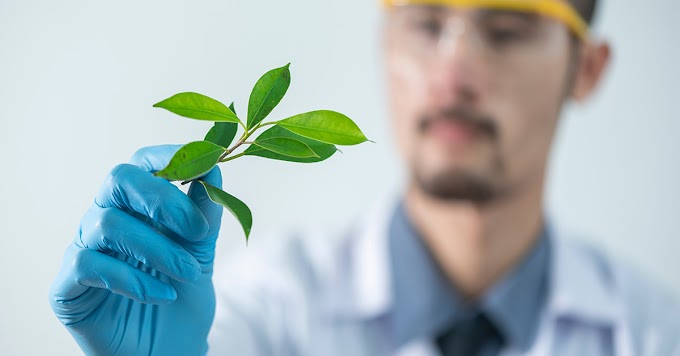Insulin is
necessary to keep blood sugar at the level that the body needs to work best. In
a person without diabetes, the body automatically makes the right amount of
insulin at the right time. Now that you have diabetes, you must do what your
body once did automatically. You must take injections of insulin every day to
stay healthy. With too little insulin in your blood, the blood sugar can become
very high. With too much insulin, your blood sugar can become too low.
This article covers the following topics about insulin:
- Insulin is a hormone.
- Insulin is a protein.
- Insulin is made in the pancreas.
- Insulin works like a key.
- Some insulin is needed during sleep.
- More insulin is needed after a meal.
- Extra sugar is stored as glycogen.
- Insulin and fat.
- Insulin and exercise.
- Mimic the natural insulin pattern.
- What if you take too much insulin?
- What if you take too little insulin?
 |
| What is insulin and how does it work? |
Insulin is a hormone.
Insulin is one of
many hormones that your body makes. Each hormone carries a different
"message." The principle message of insulin is to tell the various
cells in your body to burn sugar for fuel.
Hormones are
produced in glands and then released into the bloodstream when their message is
needed. Hormones are carried by the bloodstream until they reach the cells for
which the message is intended.
Insulin is made by
special cells in the pancreas when the level of blood sugar is rising. The
cells that are responsible for making insulin are called beta cells. These
cells are grouped into clusters within the pancreas called the islets of
Langerhans. Other types of cells in the islets can make other hormones that
have the opposite effect of insulin on blood sugar.
Insulin is a protein.
Insulin is a small
protein. It consists of two chains of amino acids: an A-chain with 20 amino
acids and a B-chain with 31. The insulins of animals like pigs and cattle have
only minor differences from human insulin. Special technology has allowed human
insulin to be produced by genetically modified yeast or bacteria. Human insulin
produced in this way is used by most people with diabetes.
Because insulin is
a protein, it would be broken down in the stomach if you took it by mouth.
Attempts to protect insulin from digestion have not yet produced a tablet that
can reliably treat diabetes. Insulin must still be given by injection.
Improvements in the design and manufacture of insulin devices and disposable
needles have made insulin injections easier than ever.
Insulin is made in the pancreas.
Insulin is made by
special cells in the pancreas when the level of blood sugar is rising. The
cells that are responsible for making insulin are called beta cells. These
cells are grouped into clusters within the pancreas called the islets of
Langerhans. Different types of cells in the pancreatic islets can make other
hormones that have the opposite effect of insulin on blood sugar.
From the pancreas,
the blood flows to the liver where about half of the insulin is absorbed.
Insulin helps the liver to store sugar for future use. The remaining insulin
released by the beta cells in the pancreas circulates in the bloodstream to all
parts of the body. Insulin helps these cells to use sugar as a fuel.
Insulin works like a key.
Insulin works like
a key. Insulin fits into a receptor on the surface of a cell that works like a
"lock." When the insulin "key" fits into the receptor
"lock", a door in the cell is opened that lets sugar enter. When
there is not enough insulin, the cell door stays closed and the cell cannot use
sugar.
Other hormones,
like glucagon, work in this same way. Like most keys, the other hormones will
only fit into locks designed for them. When these hormones unlock a cell, a
different door is opened. For instance, glucagon works on the liver to release
sugar which is the opposite effect from insulin.
Some insulin is needed during sleep.
The body is always
burning up some sugar. Even during sleep, the brain is dreaming, the heart is
beating and the lungs are breathing. All of these activities use sugar. When
the body needs more sugar, insulin levels fall slightly and glucagon levels
rise. This signals the liver to release more sugar when sugar is not available
from a meal. The release of sugar by the liver prevents the blood sugar level
from falling too low during sleep or other periods of fasting. Some insulin is
still needed for the body to use the sugar that is released by the liver.
More insulin is needed after a meal.
After a meal, a
large amount of insulin is released quickly from the beta cells in the
pancreas. The concentration of insulin in the bloodstream increases to a level
many times greater than before the meal. The higher insulin levels allow the
sugar to be taken up by the muscles and liver almost as quickly as the sugar is
being absorbed from the meal. For people without diabetes, the level of blood
sugar after a meal is not much higher than the blood sugar before eating.
Extra sugar is stored as glycogen.
Body cells
continuously use sugar as fuel to keep going. If a person without diabetes eats
more than the body's cells can burn at a given time, the extra sugar will be
stored. This saves fuel for later use. Storing some sugar also prevents the
blood sugar from rising too high after eating.
Insulin makes it
possible for the muscles and the liver to store sugar as glycogen. Glycogen is
composed of long chains of sugar. The glycogen stored in muscles will be burned
during exercise. The liver's glycogen will release sugar into the blood when
the blood sugar is low.
Insulin and fat.
Insulin also works on fat cells. Insulin helps the fat cells
absorb sugar to make fat. Fat is stored as triglyceride which is a large
molecule made up of 3 fatty acids linked by a substance called glycerol. When
necessary, fatty acids and glycerol will be released into the bloodstream and
carried to the cells where they are used as fuel.
Insulin and exercise.
Muscles need more fuel when exercising. The body releases
various hormones during exercise that increase the supply of sugar and fat to
the muscles to be used as a fuel. Some insulin is still necessary for the
exercising muscle to burn sugar, but less insulin is needed than when the
muscle is at rest. For the person without diabetes, insulin was adjusted during
exercise to maintain the level of blood sugar at which the muscles worked best.
The person with diabetes may need to adjust snacks as well as insulin
injections to fit the needs of the muscles during exercise.
Mimic the natural insulin pattern.
Before you got diabetes, the beta cells in your pancreas
automatically adjusted the production of insulin to your body's needs. Now that
you have diabetes, you must actively respond to your body's need for insulin
according to how much you exercise and to what you eat. The best way to keep
your blood sugar within the desirable range is to mimic the pattern of insulin
production that occurs in people without diabetes.
What if you take too much insulin?
If the level of insulin in your blood is too high, too much
sugar will leave the bloodstream, and the liver will not produce enough sugar
to keep the blood sugar within a desirable range. If the blood sugar continues
to fall, hypoglycemia will result. To treat hypoglycemia, you should
immediately drink or eat some form of sugar. Your body is also trying to raise
your blood sugar by releasing sugar from glycogen stored in the liver.
The blood sugar only rarely drops so low that the brain can
no longer function properly. Loss of consciousness results when blood sugar is
extremely low. In this situation, someone else must call for emergency help. A
friend or relative can also give you a shot of glucagon to reverse the effects
of insulin and raise your blood sugar.
Good diabetes care reduces the risk of severe hypoglycemia.
Good diabetes care includes learning to recognize and treat the early warning
symptoms of hypoglycemia.
What if you take too little insulin?
If you take too little insulin, your blood sugar will rise
too high. Without enough insulin, sugar from a meal cannot be used by the
organs that need it. The liver may even release more sugar when more sugar is
not needed. A high blood sugar is called hyperglycemia.
Lack of insulin can also cause your fat cells to release
large amounts of fatty acids. The liver will start burning the fatty acids.
When this happens, acid waste materials called ketones are produced. If the
ketones are produced too rapidly, your body tissues can become acidic. This
condition is called diabetic ketoacidosis and is a serious threat to your
health.
See Also:
Jump to >> What is ketoacidosis?






0 Comments